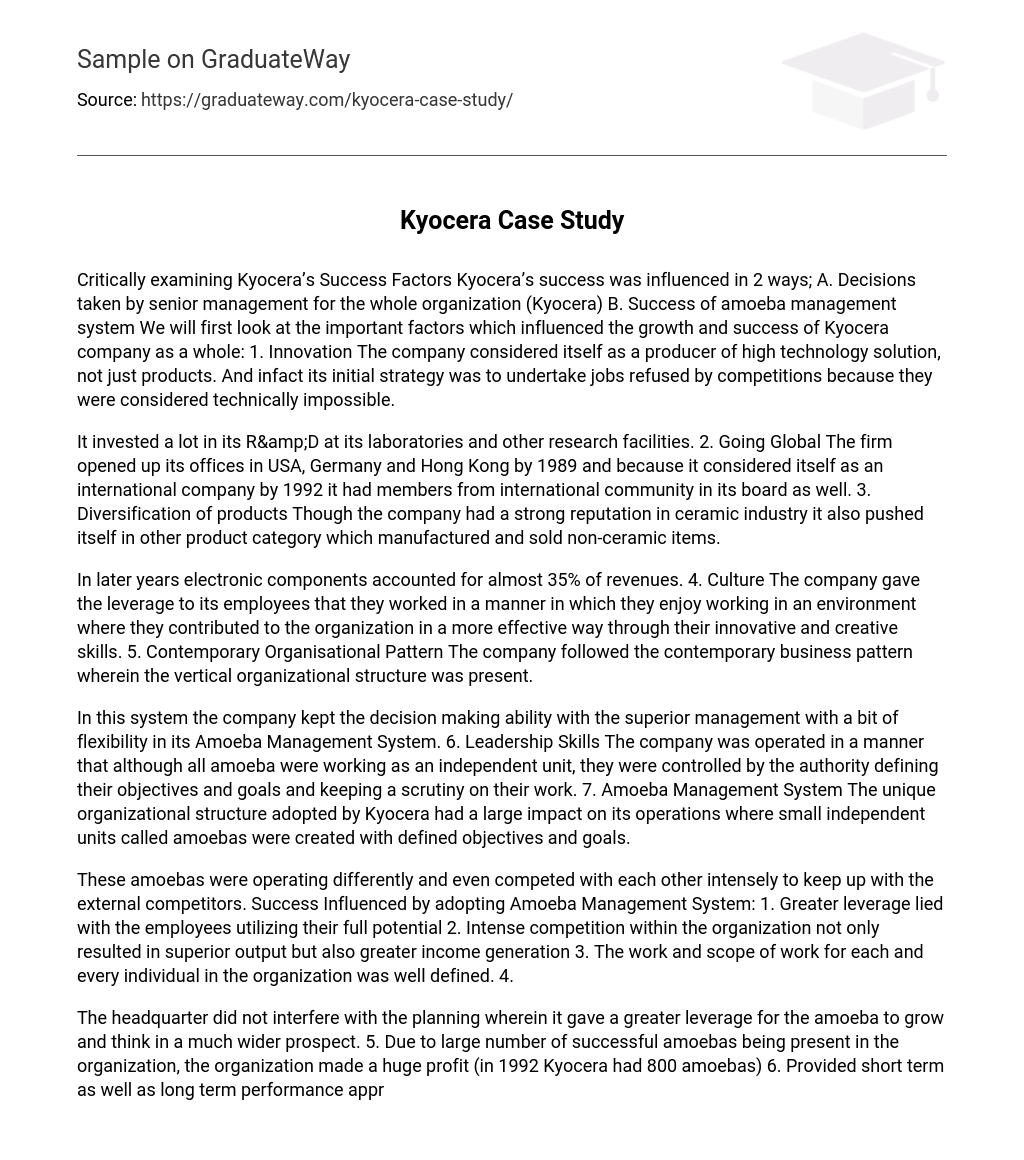Critically examining Kyocera’s Success Factors Kyocera’s success was influenced in 2 ways; A. Decisions taken by senior management for the whole organization (Kyocera) B. Success of amoeba management system We will first look at the important factors which influenced the growth and success of Kyocera company as a whole: 1. Innovation The company considered itself as a producer of high technology solution, not just products. And infact its initial strategy was to undertake jobs refused by competitions because they were considered technically impossible.
It invested a lot in its R&D at its laboratories and other research facilities. 2. Going Global The firm opened up its offices in USA, Germany and Hong Kong by 1989 and because it considered itself as an international company by 1992 it had members from international community in its board as well. 3. Diversification of products Though the company had a strong reputation in ceramic industry it also pushed itself in other product category which manufactured and sold non-ceramic items.
In later years electronic components accounted for almost 35% of revenues. 4. Culture The company gave the leverage to its employees that they worked in a manner in which they enjoy working in an environment where they contributed to the organization in a more effective way through their innovative and creative skills. 5. Contemporary Organisational Pattern The company followed the contemporary business pattern wherein the vertical organizational structure was present.
In this system the company kept the decision making ability with the superior management with a bit of flexibility in its Amoeba Management System. 6. Leadership Skills The company was operated in a manner that although all amoeba were working as an independent unit, they were controlled by the authority defining their objectives and goals and keeping a scrutiny on their work. 7. Amoeba Management System The unique organizational structure adopted by Kyocera had a large impact on its operations where small independent units called amoebas were created with defined objectives and goals.
These amoebas were operating differently and even competed with each other intensely to keep up with the external competitors. Success Influenced by adopting Amoeba Management System: 1. Greater leverage lied with the employees utilizing their full potential 2. Intense competition within the organization not only resulted in superior output but also greater income generation 3. The work and scope of work for each and every individual in the organization was well defined. 4.
The headquarter did not interfere with the planning wherein it gave a greater leverage for the amoeba to grow and think in a much wider prospect. 5. Due to large number of successful amoebas being present in the organization, the organization made a huge profit (in 1992 Kyocera had 800 amoebas) 6. Provided short term as well as long term performance appraisal to the company’s head office. 7. Improved the company’s communication channel throughout the organization 8. Focus on personal development reduced the chances of greater employee turnover.





